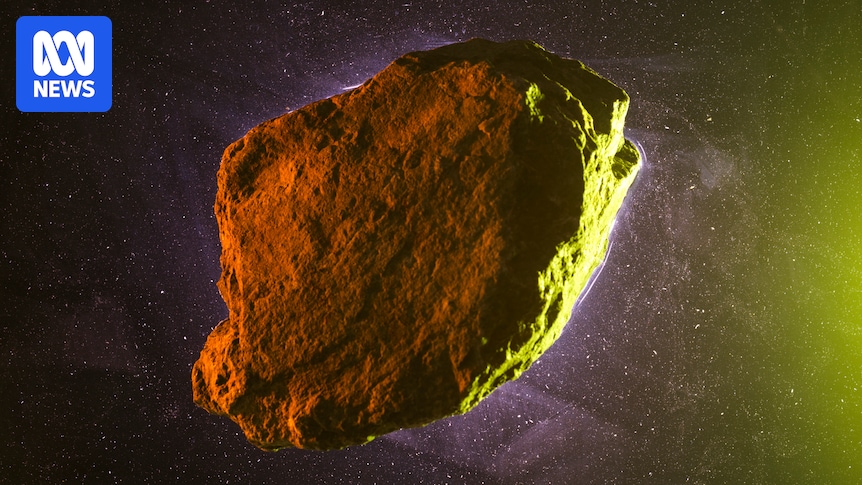A bus-sized asteroid is currently hurtling through our patch of the Solar System, but far from being a threat, a new study suggests the space rock will become Earth’s companion for a couple of months.
2024 PT5 is one of a number of objects dubbed by some astronomers as “mini-moons” (also known as a temporarily captured orbiters) discovered in the past few years.
But classifying exactly what makes an asteroid a mini-moon is harder than it seems.
To help you get to get this mini-moon into your orbit, we’ve answered five quick questions about the discovery.
What is 2024 PT5?
Last month, on August 7, an asteroid called 2024 PT5 was discovered by an Asteroid Terrestrial-impact Last Alert System (ATLAS) in South Africa.
ATLAS systems try to automatically detect asteroids and other near-Earth objects as they approach the planet.
In this case, it picked up 2024 PT5 the day before the asteroid reached its closest approach to Earth at just under 600,000 kilometres — almost twice the distance between the Moon and Earth.
The asteroid is around 11 metres wide, which might sound large, but it’s relatively small in asteroid terms.
With this close approach to Earth, two asteroid scientists from Spain published a study in the Research Notes of the AAS suggesting that 2024 PT5 would become a mini-moon from September 29 until November 25.
This means that for almost two months, the asteroid will be temporarily captured in Earth’s orbit, before being flung back out into the Solar System.
How can you tell if something is a mini-moon?
Well, this is the difficult part.
A mini-moon has to be in orbital resonance with Earth — meaning that the two objects need to exert regular gravitational influence on each other’s orbit.
Most mini-moons discovered in the past did at least one full loop of Earth, and some were gravitationally bound to Earth for years.
Whether or not 2024 PT5 is actually a mini-moon is up for debate.
Although it will be captured by Earth’s gravity and therefore in orbit for 57 days, it will take a horseshoe path, and enter Earth’s orbital resonance for just a small section of that loop before being slingshotted back from whence it came.
According to Phil Bland, a planetary scientist at Curtin University, its orbit might be a bit too short for it to count as a mini-moon.
“Usually, any sort of moon, anywhere in the Solar System, has got to orbit that primary body at least once,” he said.
The study researchers made the case for the asteroid being a mini-moon by pointing to another called 2022 NX1.
It also entered a horseshoe path when it was temporarily captured by Earth’s gravity for just under 22 days in 2022.
As mini-moons are a relatively new phenomenon, Professor Bland suggests groups such as the International Astronomical Union may eventually decide whether an asteroid needs to be in Earth’s gravity for at least one orbit to classify as a mini-moon.
Can I see it?
Unfortunately not. It’s extremely small, and not very bright.
At around 27.6 magnitude, it’s too dim even for most home telescopes to see.
This is the case with most asteroids, and highlights one of the reasons it’s so hard to find them.
How many other mini-moons are there?
Mini-moons should be relatively common, but, as mentioned, they’re hard to spot.
A study in 2012 found there should be at least one natural satellite, larger than a metre wide, orbiting Earth at any given time.
However, since the first modern mini-moon 2006 RH120 was discovered 18 years ago, scientists have only uncovered a handful, with the most recent being 2022 NX1.
To find asteroids and mini-moons, you need to see faint objects over a large patch of sky, which may only be there for a short period.
“Small stuff that moves quickly is really difficult [to see] from an observational point of view,” Professor Bland says.
Telescopes such as ATLAS and large surveys of the sky such as the Catalina Sky Survey are slowly cataloguing the asteroids in our neighbourhood.
What else is up there?
Mini-moons aren’t the only interesting orbit-based asteroid phenomenon around.
The Earth and the Sun’s cosmic dance results in a number of points that are relatively gravitationally stable called Lagrange points.
Lagrange points L4 and L5 are where trojans “hide” in Earth’s orbit. (NASA/WMAP Science Team)
These are hotspots for small asteroids and even clouds of asteroids to congregate.
One type is called a “trojan” satellite, which is a space rock that sits either in front or behind the Earth in Lagrange points known as L4 and L5, but is part of the same orbit as Earth.
Currently we know of just two Earth trojans — both located in the L4 point — while Jupiter has thousands of trojans around its L4 and L5 points.
